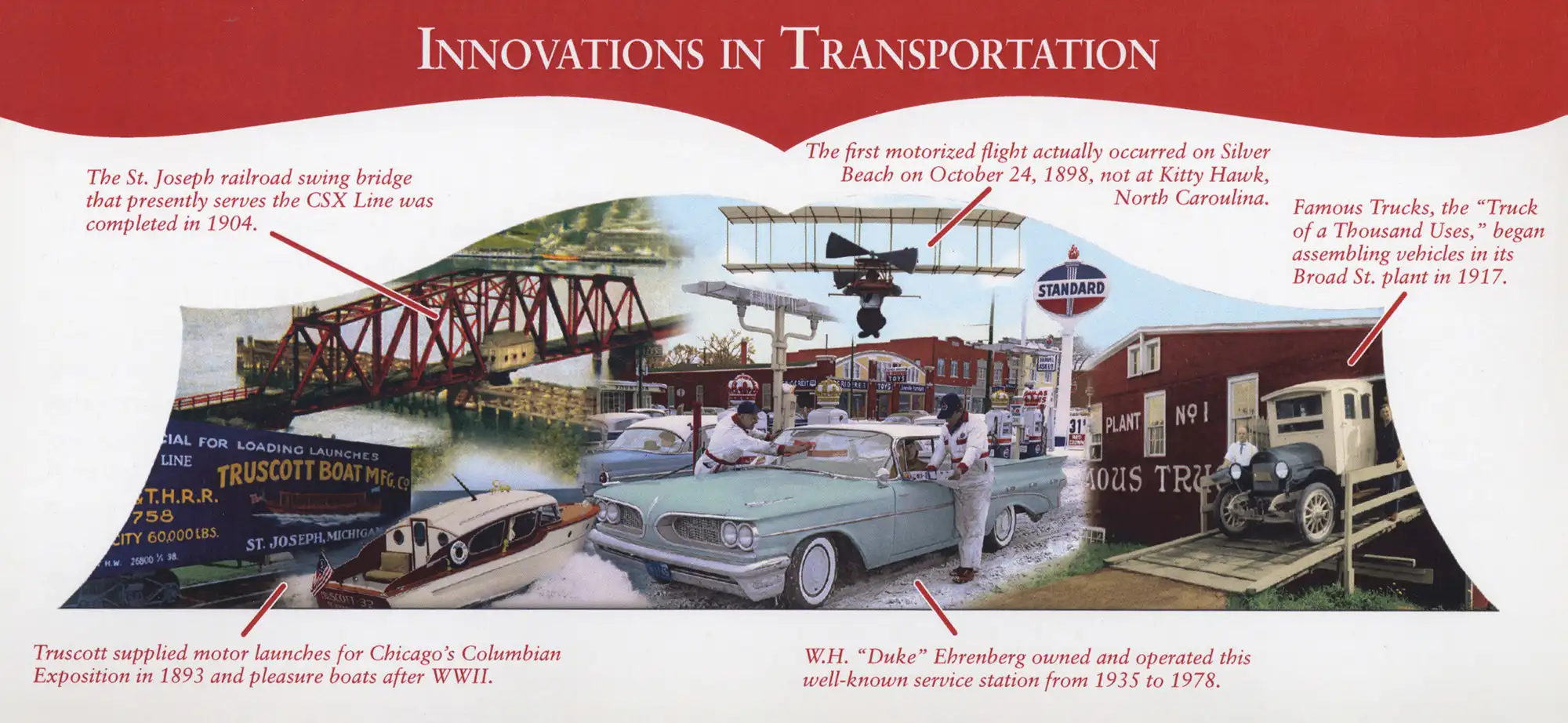
Innovations in Transportation
Transportation is central to the development of a society and the expansion of its economy. Our area started seeing transportation improvements in the 18th and 19th centuries when crudely constructed roads began replacing Native American trails. One of the first pikes in Michigan was Territorial Road which traversed from Detroit to its terminus in St. Joseph.
Steam power improved the reliability of transportation, first to ships and then to the railroads. To keep trains and ships moving, the swing bridge across the St. Joseph River was completed in 1904.
Water transportation has a long history here. In 1892, Truscott Boat Company relocated its business from Grand Rapids to St. Joseph. The company made its name by supplying motor launches for Chicago’s Columbian Exposition in 1893. It also built ships for both world wars and at one time it was Berrien County’s largest employer.
Many people believe that the Wright brothers flew the first motorized aircraft. But five years earlier, on October 24, 1898, Professor Augustus Herring flew his motorized Chanute-Herring glider off of a Silver Beach sand dune. This engineer never received acclaim because officials declared that his glider had no steering mechanism while the Wright’s flying machine had rudimentary controls.
The assembly of Famous Trucks, the “Truck of a Thousand Uses,” began in 1917 at the Palmer Rubber Co. on E. Broad St. where Vail Rubber Works is now located. Government war contracts never became a reality, so like many other startup vehicle manufacturers, this one closed its doors in 1922.
To keep automobiles rolling, gas stations cropped up along roadways. Ehrenberg’s Standard Station on Main St. in St. Joseph was an iconic service station where service meant an attendant not only filled your gas tank at 31.9 cents a gallon but checked the oil and cleaned your windshield. W.H. “Duke” Ehrenberg owned and operated this well-known business from 1935 until 1978.
The Innovation in Transportation Rounding Board was made possible by a donation from The MacFarlane Family.